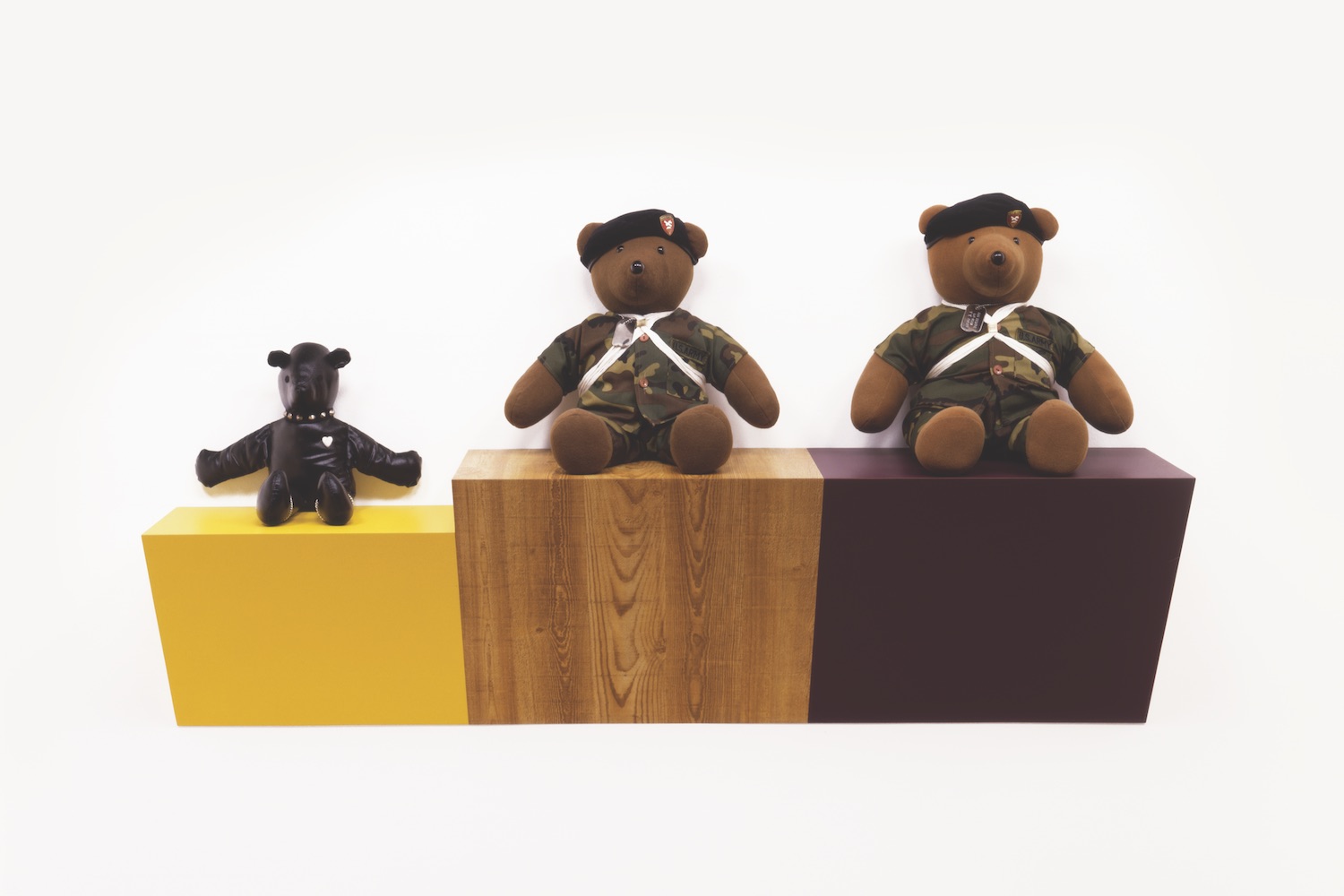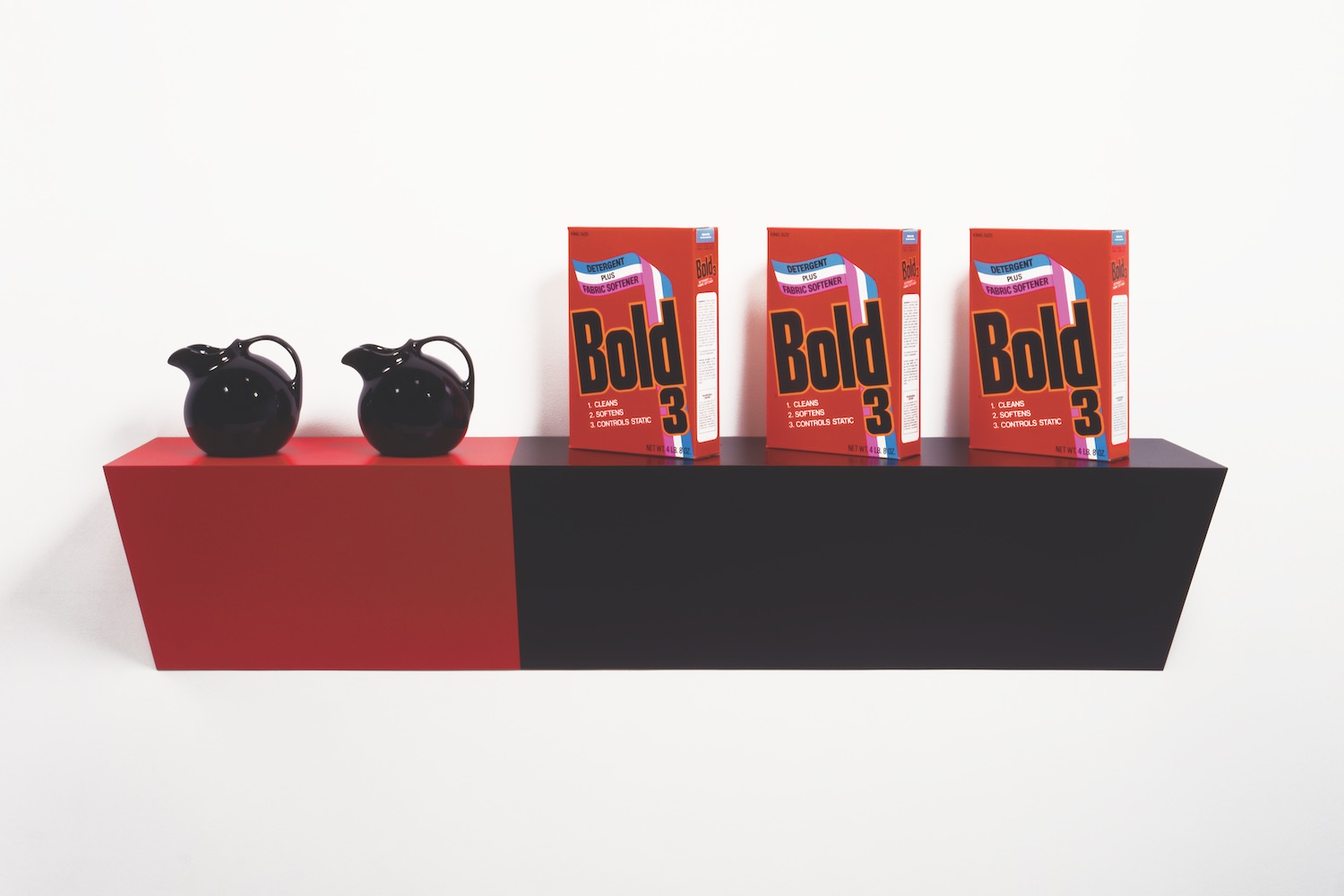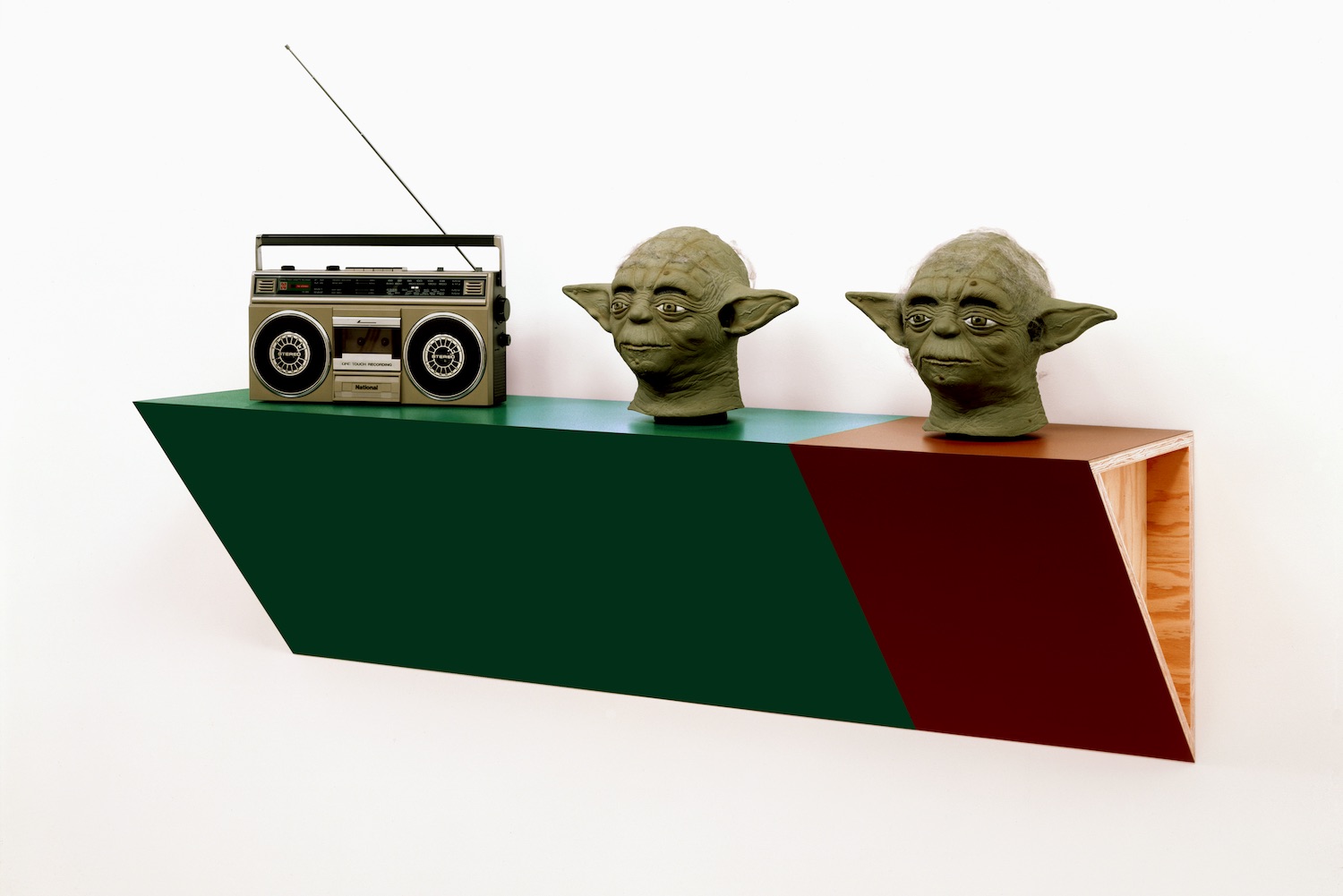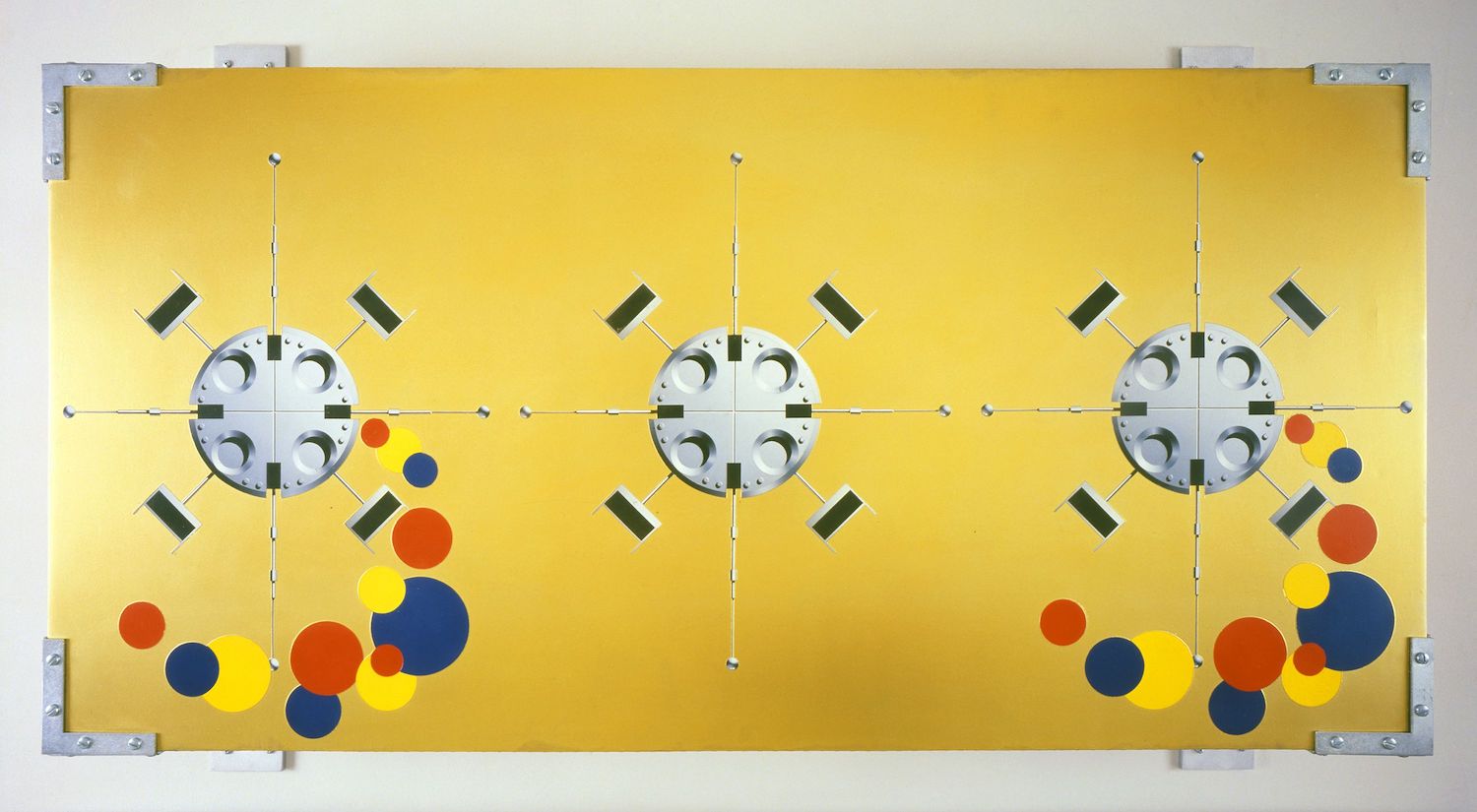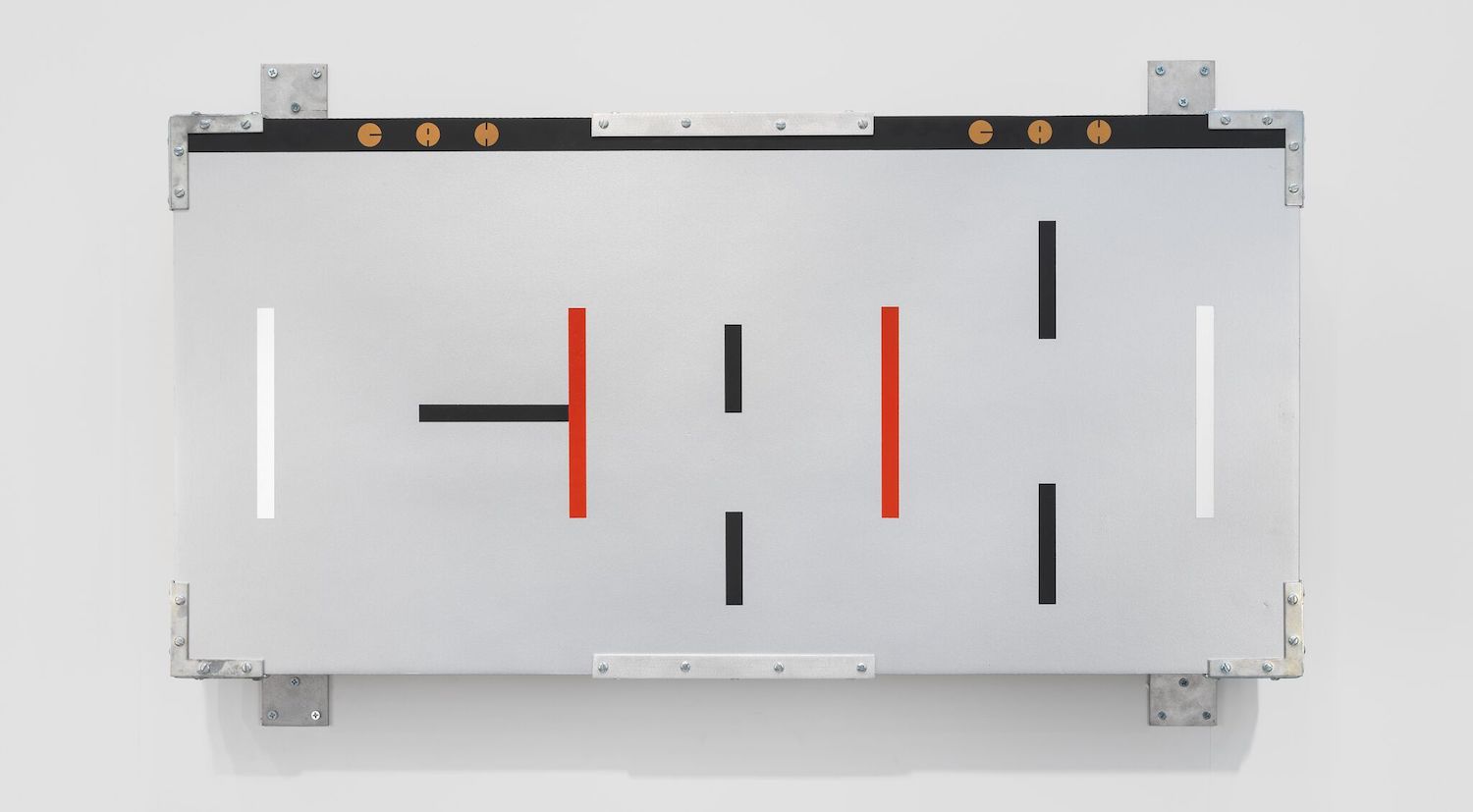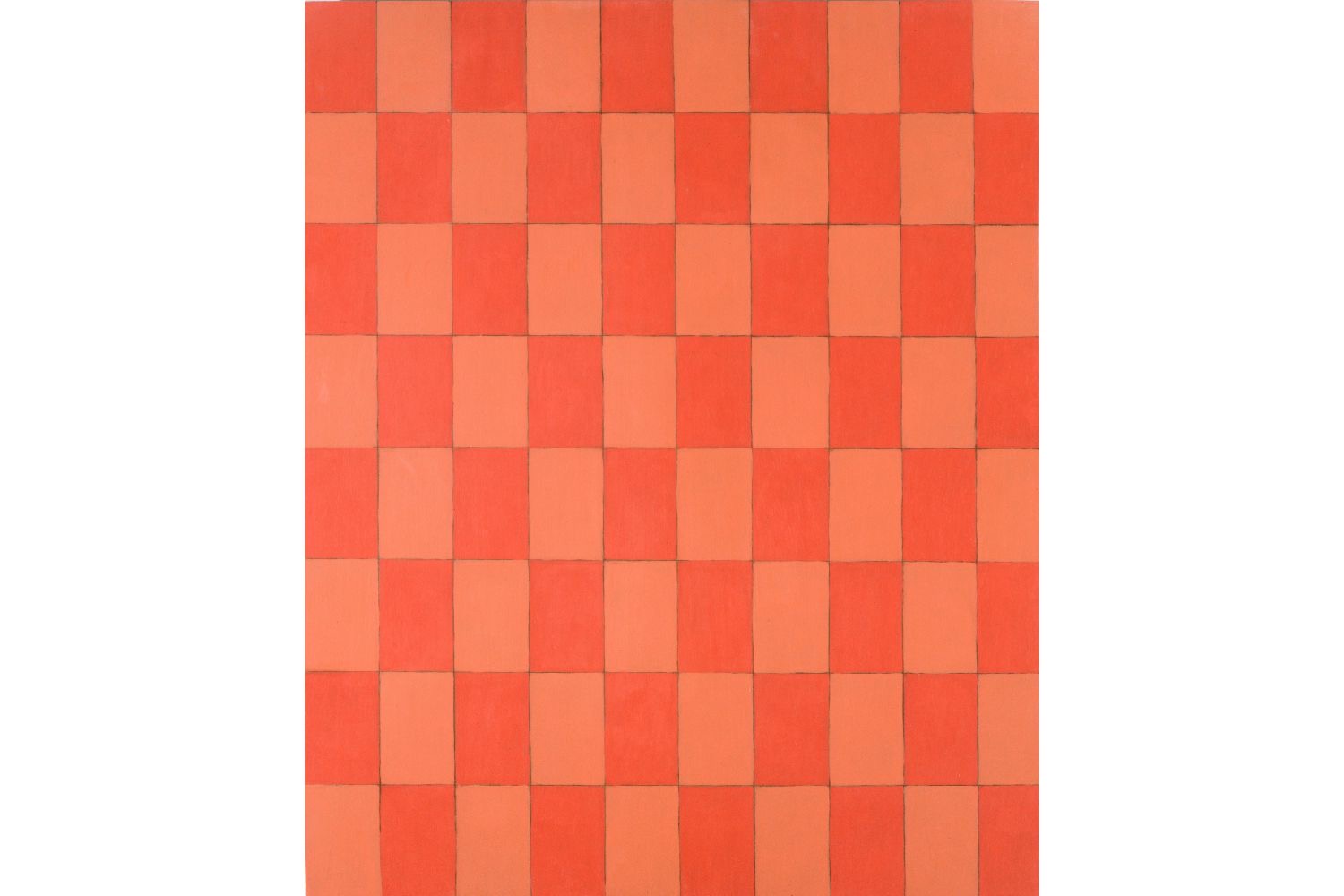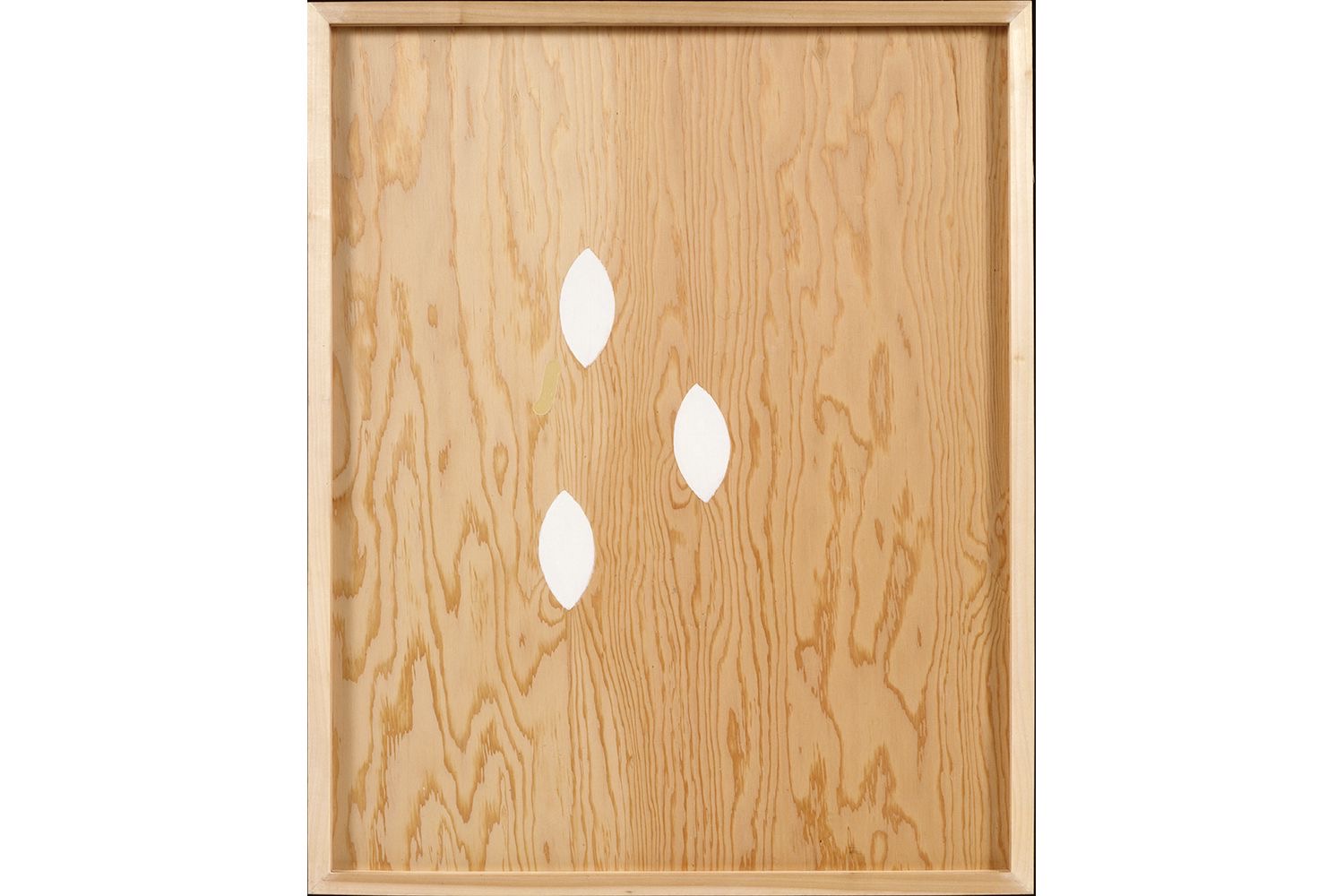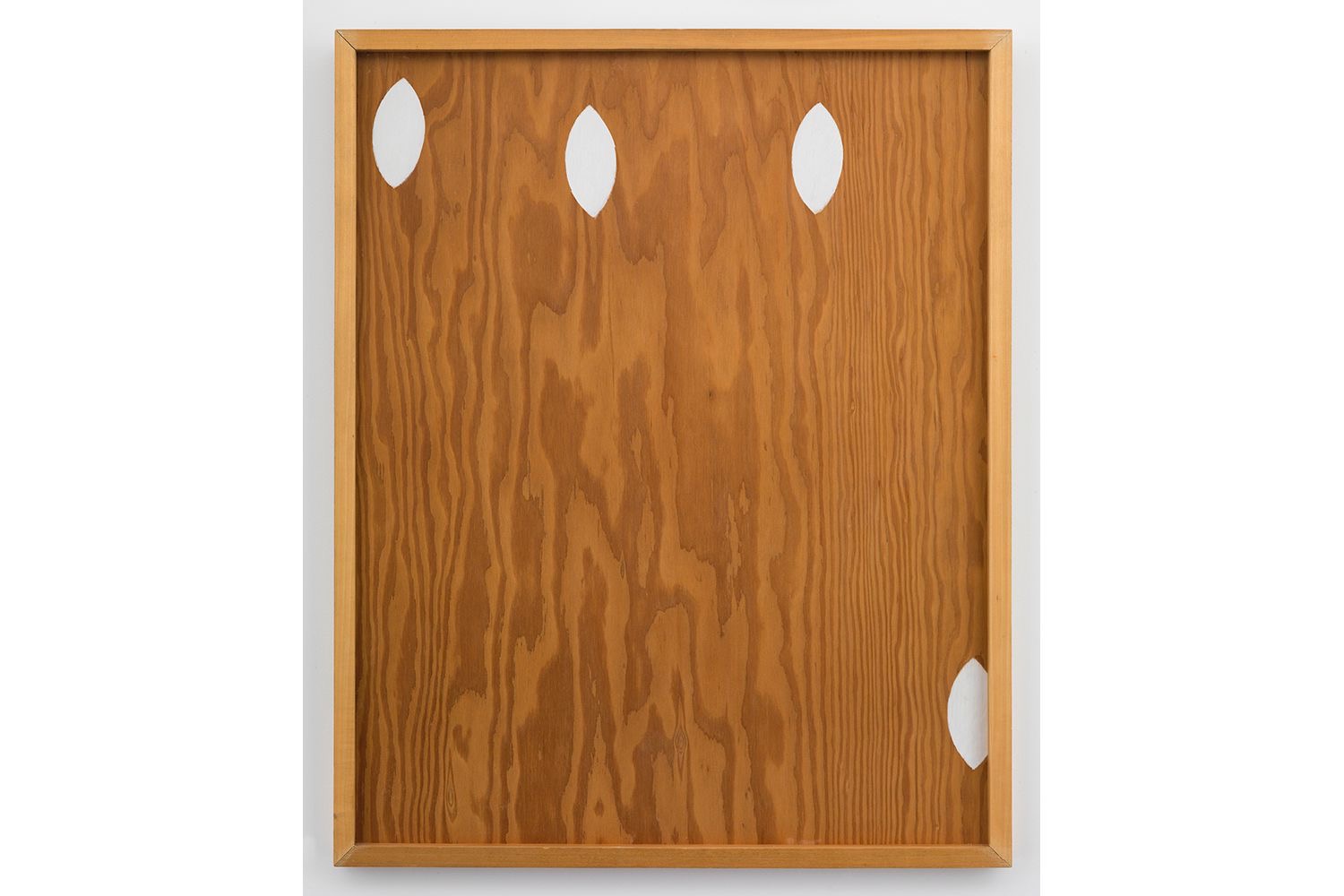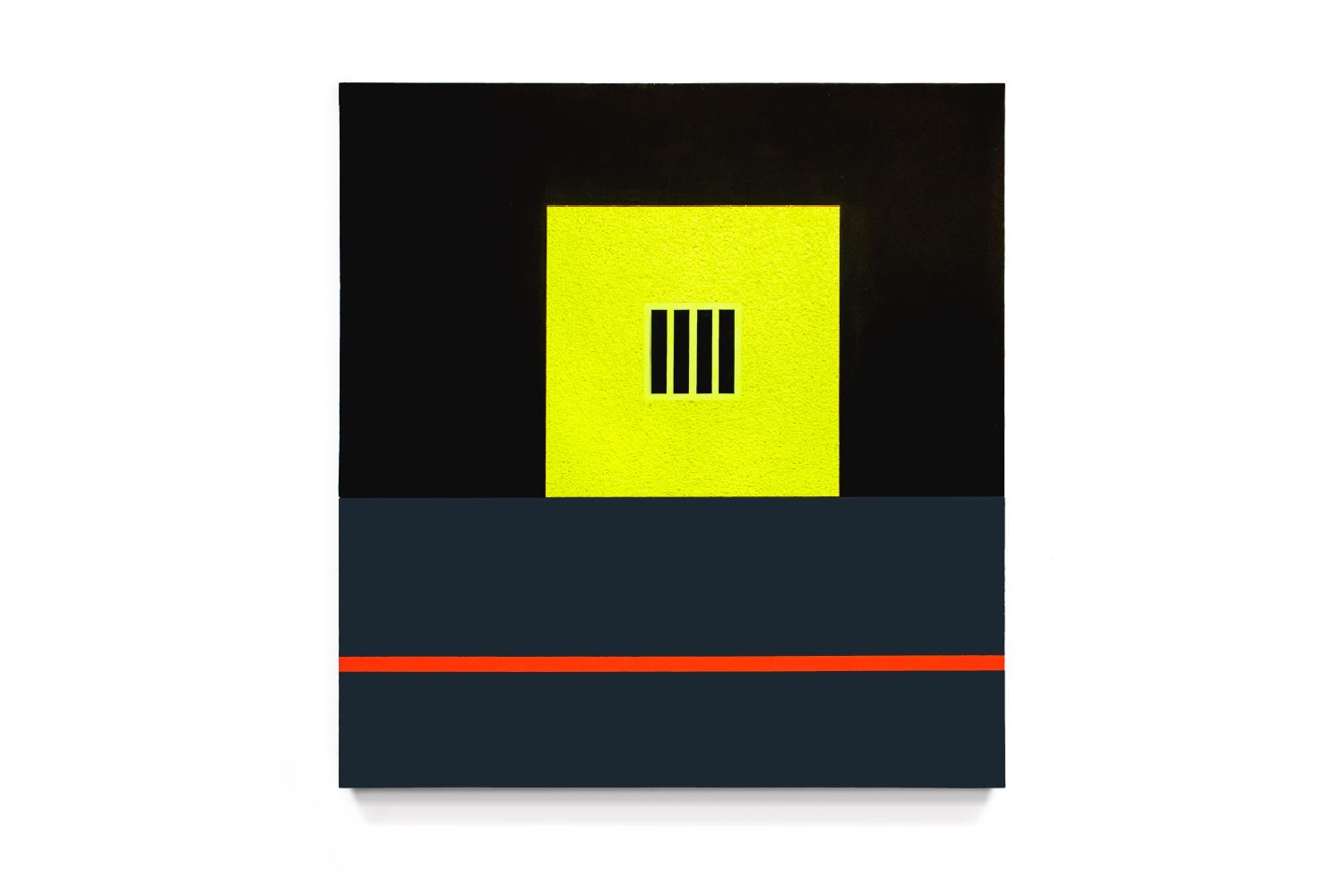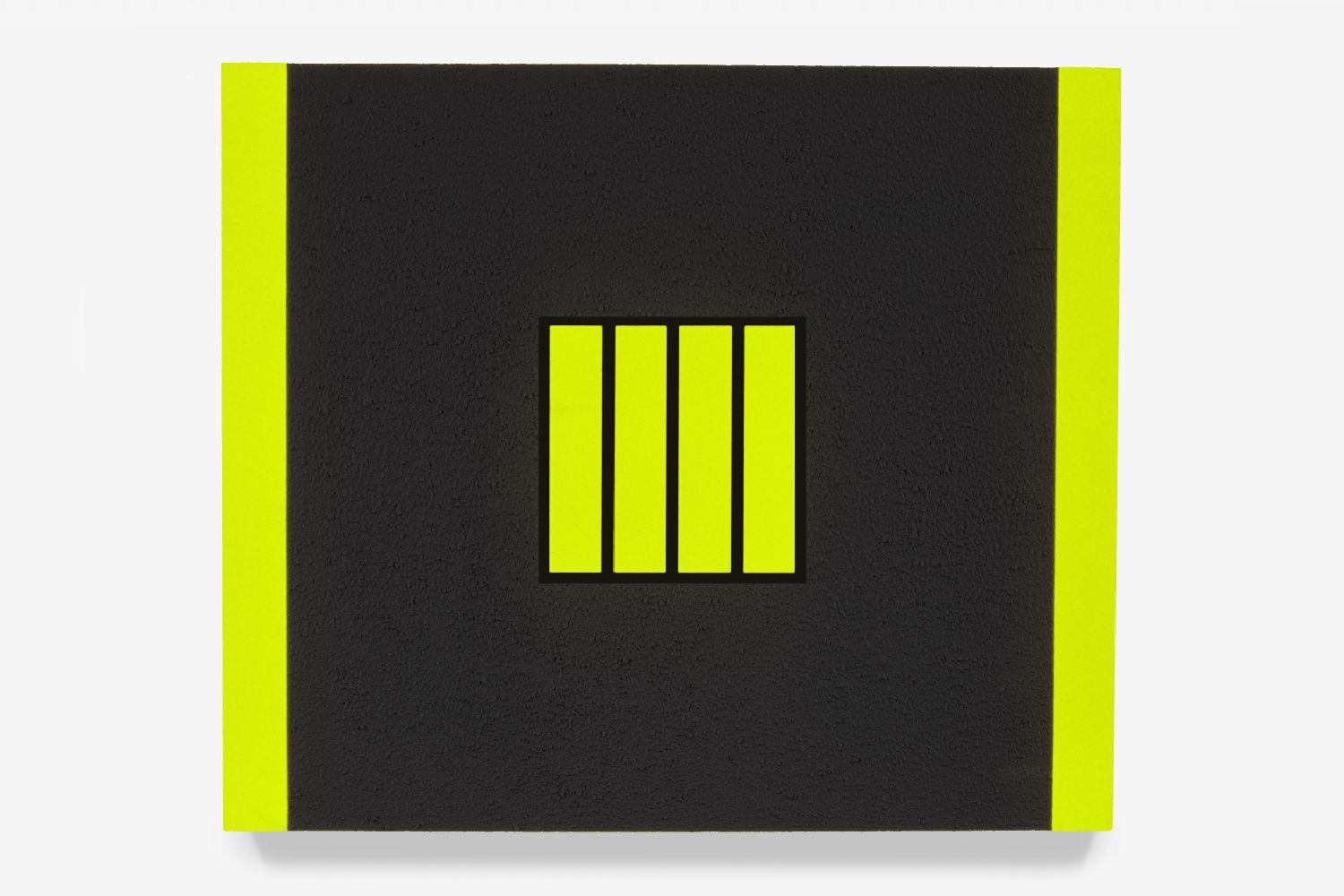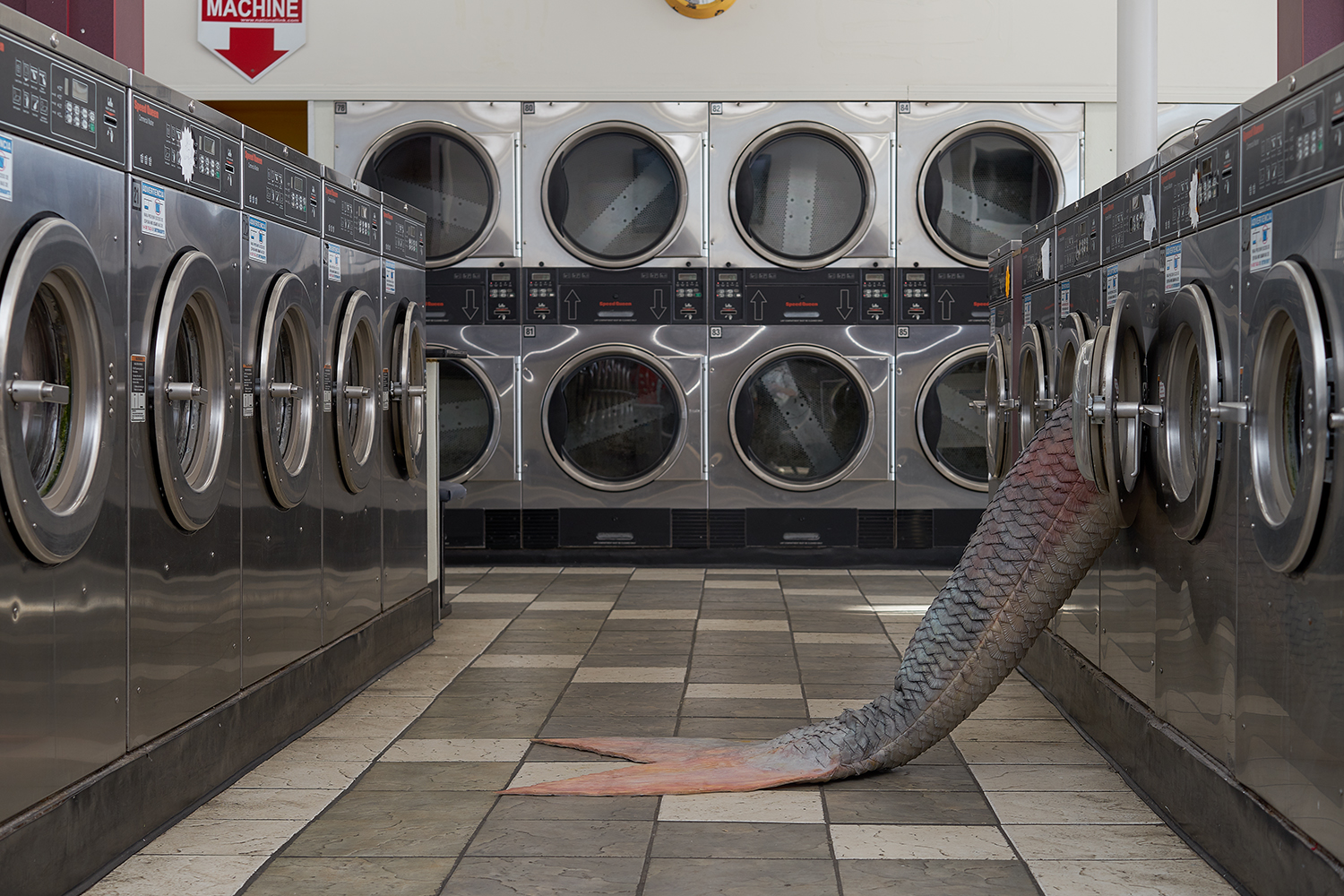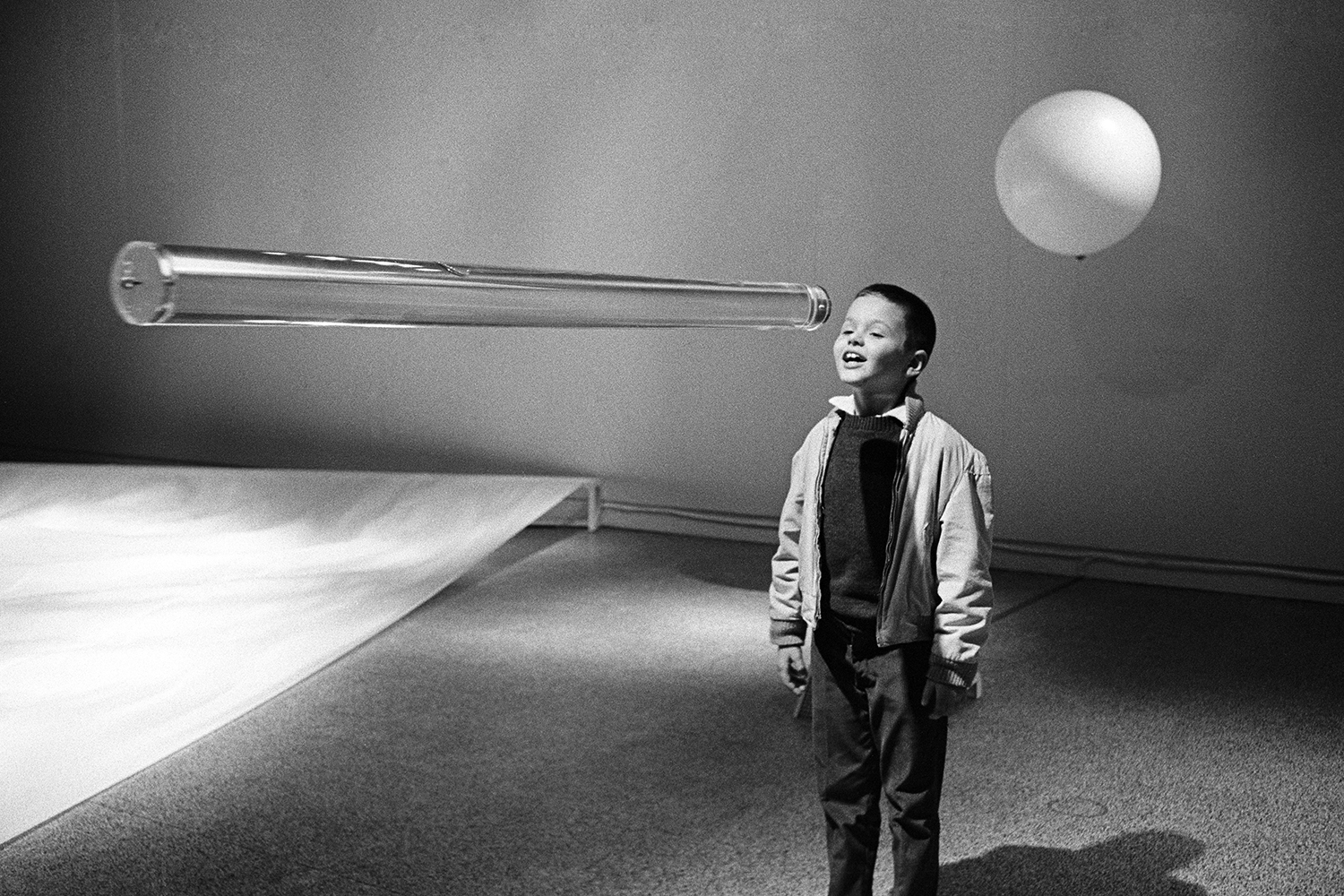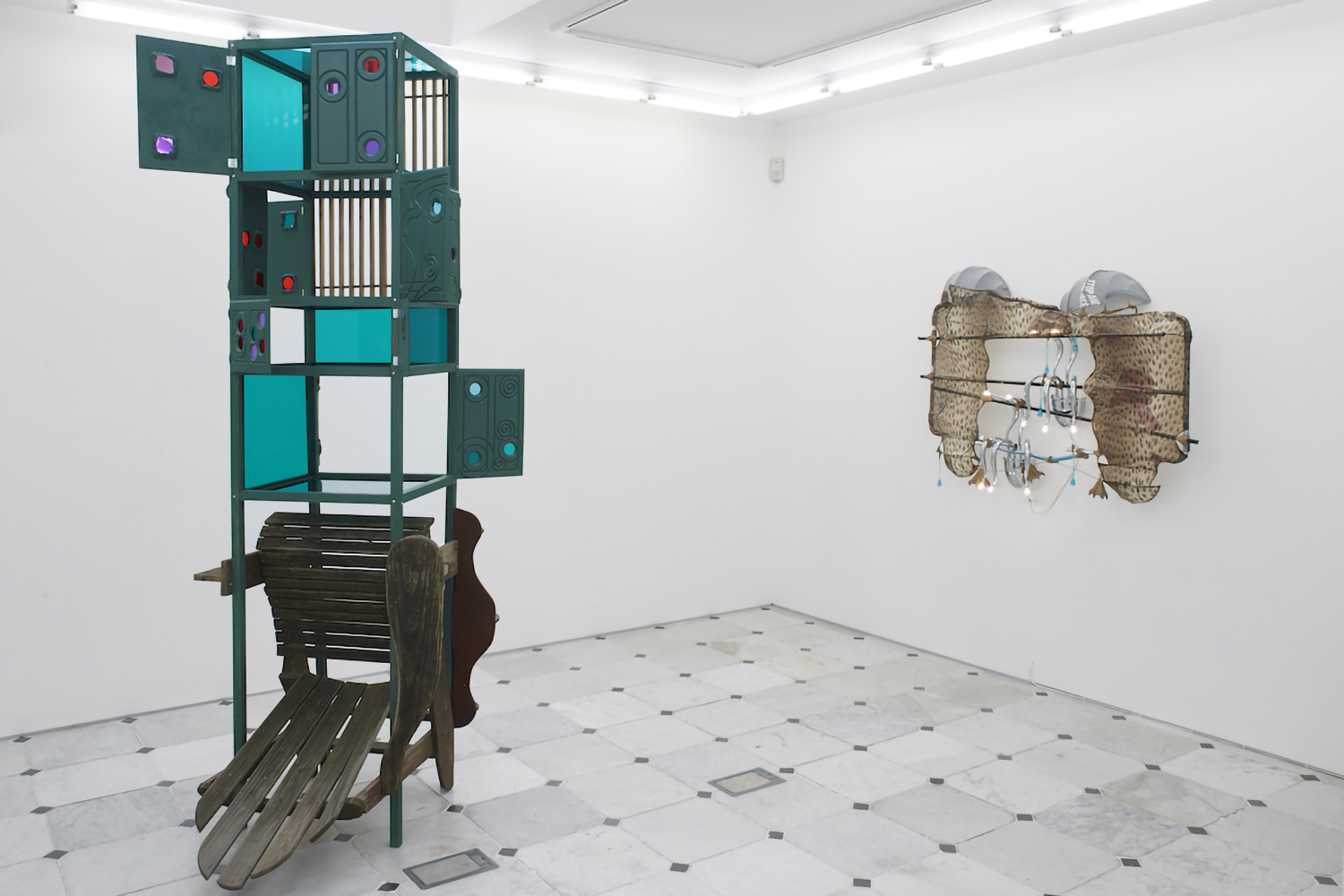Peter Nagy: In what ways does this new work depart from or elaborate upon work done by the Pictures generation of appropriators (that being the group associated, early on, with Metro Pictures: Sherrie Levine, Richard Prince, Troy Brauntuch, etc.)? Haim, would you address that question, because your work is in many ways an elaboration of those strategies . . .
Haim Steinbach: To respond to this question, it’s important to bring in a bit of history. In 1979 1 did an installation at Artists’ Space titled Display no. 7; the work consisted of an arrangement of objects and artifacts on shelves and counters around the gallery space, ranging from a high-tech kettle propped on a minimal wall-box, to the picture magazines and brochures displayed on the receptionist’s desk. Whereas most of the Pictures-generation artists have
been lifting images to make their work, I have been using objects. The discourse this art has been engaged in questions the position of the subject in relation to the image object. There has been a growing awareness of the way that media affect our viewing of reality in a pictorial fashion. In a sense, the media have been turning us into tourists and voyeurs outside our own experience. The Pictures artists have been involved in questioning their own position as producers of art in relation to the mythic baggage of subjectivity and individuality, of which they have become acutely self-conscious. There has been a shift in the activities of the new group of artists in that there is a renewed interest in locating one’s desire, by which I mean one’s own taking pleasure in objects and commodities, which includes what we call works of art. There is a stronger sense of being complicit with the production of desire, what we traditionally call beautiful seductive objects, than being positioned somewhere outside of it. In this sense the idea of criticality in art is also changing.
Ashley Bickerton: If we’re going to draw a difference, it’s going to have to be between the original program, as outlined by critics such as Douglas Crimp and Craig Owens, and the tendencies now beginning to emerge with the younger artists. A key operative word that may be useful right now would be “truth”: I feel the Pictures group was after a particular deconstruction or breakdown of the process of the corruption of truth, whereas at this point I feel we are utilizing that process of corruption as a poetic form, a platform or launching pad for poetic discourse in itself. Through tactile choices and presentation, the art object has now been placed in a discursive relationship with the larger scenario of the political and social reality of which it is a part. In a self-conscious and ongoing dialogue with the social, political, and intellectual climate of the time and place it will operate in, and with the entire process of its absorption. Much of the work produced by the Pictures group was essentially deconstructive and task-oriented in its spectacular didacticism. It was a cool approach to hot culture, whereas this new work of which we speak has more to do with information in general, specifically the schism that exists between information and assumed meanings, particularly how the formal elaboration of information necessarily affects its possible meanings. This work has a somewhat less utopian bent than its predecessor.
PN: So we’ve learned some strategies from the Pictures generation.
AB: We’ve consciously learned and incorporated strategies from a lot of art-historical sources. I tend to think that right now, at least from this vantage point, with the wash of contrary information we have witnessed in the postwar period, with the comings and goings of all sorts of different isms, we’re now able to step back and merge, in fact to implode a variety of different strategies and epistemologies into thetotal art object that is capable of speaking of its own predicament as well as in general. This would oppose it to the directed pro- grammatic operative of original Pictures practice.
PN: How integral are notions of leftist politics or cultural subversion in the work?
Philip Taaffe: Well, I think the best way for me to address that is to present something I’ve prepared very recently, a kind of aphoristic diagram in the form of an imaginary logbook. This is loosely based upon the HMS Bounty incident, and it’s entitled Mutiny within Bounty. This is the logbook entry for Day One: “Our condition is driving us to polite distractedness. We don’t like it and we will no longer put up with it. We know how to run this ship and we are taking over. Our journey must accomplish nothing less than the establishment of paradise on earth. We’ve been endlessly mistreated by our culture, superabundance is bringing us nowhere, and we refuse to allow this situation to be perpetuated. We’re not buying and we’re not selling. We’re casting our oppressors adrift on board a bronze raft, and we’re getting the hell out of here. We’re going to where we can celebrate our new destiny in peace and freedom, to where our only possessions are our minds, our hearts, our aspirations, and whatever we find when we get there.” Day Two continues: “Everyone seems to agree that our approaching destination looks frighteningly familiar. We may have to find someplace else.”
PN: And what perhaps is that approaching destination?
PT: It’s our future, the goal of our procedures, how we are able to evolve our methodologies and our thinking, where we are placing ourselves, where we find ourselves going. Peter Halley: I think that Marxian thought really has to be integrated into one’s thinking, but I identify myself more with a New Left position, in which an absurdist or existential position is integrated with Marxian concepts. In addition, I’d like to bring in figures, like McLuhan, who are also involved with a kind of political thinking. I think it’s difficult nowadays to talk about a political situation: along with reality, politics is sort of an outdated notion. We are now in a post-political situation. As an artist, one ends up aspiring to make an art object that is a situationist object, in and of itself, in the way it’s put together. Rather than addressing topical issues, I think that a work of art has to address critical issues; the topical political issues of the day, to the extent they exist, are certainly of concern to people as individuals, but in a work of art it is the structural questions behind those topical issues that are important. For me, the most political component in a work of art—and it’s a component that the work of everybody on this panel shares—is the idea that the work be conceived in such a way that anyone could do it. That’s what I’ve always admired about Warhol or Stella that one has a sense that one could actually participate in the making of the work. Finally, I find myself strongly interested in addressing postindustrial issues: the issues of the situation of the suburbanized middle classes in postindustrial countries. That’s not to say that what’s going on with other classes that are in even worse shape isn’t of interest, but those situations seem to me more clear cut. It’s precisely the ambiguity and the sort of unknown quality of life in the subdivision that seems worth addressing.
PN: In my own case, as well as that of Meyer Vaisman, the activity of running a gallery has a similar situationist advantage. It seems to me that (and perhaps this accounts for the great success that so much of this work has achieved so quickly) in each of the individual works of art, there are two separate dialectics operating: on one hand, the work is appealing to an audience primarily composed of artists and intellectuals, and on the other to an audience primarily composed of collectors and dealers. I’m wondering how conscious the artist is of designing a work of art for audiences that are, in fact, very different; very far apart.
HS: In my case, I spend a lot of time shopping, and I find the commodities that I look at to be very often addressed to a general audience, of which I am a pan. On one hand there is an art context, out of which I come, and through which I think about what it means to present an object with another object or with another form. On the other hand I use groupings or arrangements of objects that are already pre-set for a general audience.
PN: So you’re saying it’s pretty unconscious on your part.
HS: I am conscious that in many ways today the distinctions between an elite as opposed to a more general audience are becoming blurred. There is an equalizing factor at work in the way things are produced now giving an illusion of a shared freedom, of one audience. This kind of dynamic interests me, and I attempt to deal with it in my work.
PT: Generally, I’m opposed to a difficult level of hermeticism within a work. I want the work to be as open as possible. I want my work to be freely experienced. Jeff Koons: To me, the issue of being able to capture a general audience and also have the art stay on the highest orders is of great interest. I think anyone can come to my work from the general culture; I don’t set up any kind of requirement. Almost like television, I tell a story that is easy for anyone to enter into and on some level enjoy, whether they enjoy just a little glitter of it and get excited by that or maybe, like with the Equilibrium Tanks, they get a kick out of the sensationalism of seeing basket-balls just hover. The objects and the other images that are interconnected to the body of work have other contexts and, depending on how much the viewer wants to enter it, they can try to get more out of it and start dealing in art vocabulary instead of just sensational or personal vocabulary, and start to deal with abstractions of ideas and of context. So, I purposely always try at least to get the mass of people in the door, and if they can go farther, if they want to continue to deal in an art vocabulary I hope that that would happen, because by all means I am not trying to exclude high-art vocabulary.
PN: Sherrie’s early work was instrumental in developing this because conceptualism as it existed in the early seventies pretty much excluded the idea of beauty and seduction, and now we are dealing with work that is very intellectual-it has, as Jeff said, a highly developed art vocabulary but at the same time it is highly seductive and luscious!
AB: Sherrie’s work was instrumental in that it talked about the art object as it existed in all stations of its existence—in storage, in shipping, in the museum, as it was absorbed into the media through reproduction, as it was bought and sold. The issues of ownership were all very important. Sherrie helped to create an awareness, which was built into the work, of external social, political meanings that exist beyond the pictorial presence of the work.
PN: Next, I’d like the artists to comment on the relationship of’ their work to classical surrealism, the history of assemblage, and the ready-made.
JK: My work is really quite the opposite of these. I feel I come out of the Duchampian tradition; Duchamp showed the ready-made with indifference to it, but my personal development has been to maintain the integrity of the object. Where the assemblages of surrealism manipulated the objects’ integrity, I maintain that integrity. For example, the Equilibrium Tanks maintain the purity of a commercial tank, distilled water, and a basketball. They are put together, so it is a form of assemblage, but these objects are not completely intermixed or melded together. I do not, however, rule out transforming the object’s content. I’m very interested in transforming its content in order to reveal certain personality traits that have always been within that object, but just have not chosen to show their face to date. I would like to offer up a term that has had vital currency in the process of my own thinking: contingency. I think that through this procession of contingencies, discourses are being pulled together into the object itself, promoting an awareness of the fact that all meanings are contingent upon some other meaning, where meanings are appropriated for their relationship to external forces, the larger social schema in which they’re involved,
HS: There was a certain kind of mystery about the artist in Duchamp’s work, or the place of the artist, what the artist was, a hidden thing. With my work there is basically an attempt to present these objects. Also, Duchamp chose very specific kinds of objects, very often banal, which referred to low-grade activities entirely removed from the sanctifying place of a work of art. But on the other hand, in a kind of inverse way, there was a hierarchy of not just the art, but the question of the position of the artist with respect to the art. It’s not an easy thing to do; if a work has integrity or any kind of consistency, ultimately it is given a certain authority, which brings the authority back to the artist. But nonetheless, the referent in my work has a lot to do with a participating in taking pleasure in objects that are easily accessible and interchangeable and also that come from different standards of value. The objects I use now come from a particular mode of production because I have a limited budget, but I’m looking forward to a time when I can break that limit and acquire some more “important” things!
PN: Whereas Sherrie’s early photographic work (as well as Richard Prince’s work) can be understood as representing the dead-end ground zero of collage, Haim’s and Jeff’s work can be seen as the epitome of assemblage as it exists today specifically because there is so little manipulation within it. This just backs up my idea that no revolution was more successful than the surrealists’: we now exist in a collage-bound world, and a dream reality. Everything they set out to do has transformed the world we live in, What might we say is the relationship of the new art to the geometric abstraction of the constructivists and minimalists?
Sherrie Levine: I’d like to read to you two French examples. First: “As Félicité reached the top of the hill she saw the lights below twinkling in the darkness like a host of stars, and the shadowy expanse of the sea beyond. Then a sudden feeling of faintness made her stop; and the misery of her childhood, the disappointment of her first love, the departure of her nephew, and the death of Virginie all came back to her at once like the waves of a rising tide, and, welling up in her throat, choked her. “When she got to the boat she insisted on speaking to the captain, and without telling him what was in her parcel, asked him to take good care of it. “The taxidermist kept the parrot a long time. Every week he promised it for the next; after six months he announced that a box had been sent off, and nothing more was heard of it. It looked as though Loulou would never come back, and Félicité told herself: ‘They’d stolen him for sure!’ “At last he arrived looking quite magnificent, perched on a branch screwed into a mahogany base, one foot in the air, his head cocked to one side, and biting a nut which the taxidermist, out of a love of the grandiose, had gilded. “Félicité shut him up in her room. “She entered into her death agony. Her breath, coming ever faster with a rattling sound, made her sides heave, Bubbles of froth appeared at the corners of her mouth, and her whole body trembled. A blue cloud of incense wafted up into Félicité’s room. She opened her nostrils wide and breathed it in with a mystical, sensuous fervor. Then she closed her eyes. Her lips smiled, her heartbeats grew slower and slower, each a little fainter and gentler, like a fountain running dry and an echo fading away. And as she breathed her last, she thought she could see in the opening heavens, a giant parrot hovering over her head.” What I mean is, just when you think you’ve got it, it gets you. Another example: It was with his circle paintings that Olivier Mosset introduced himself to the public in Paris at the end of the 1960s as a member of the radical artists’ group BMPT, an acronym for Buren, Mosset, Parmentier, and Toroni. This association was to prove somewhat problematic in light of Mosset’s real concern, for the circle paintings were in danger of becoming misconstrued as a logo. Mosset resolved this dilemma by borrowing the stripe pattern used by his colleague Buren, not in the sense of merely copying it, but as an object lesson.
PH: My relationship to previous geometric art has both an analytical and a synthetic aspect. It’s analytic, because I think of my work as being a deconstruction of themes in Mondrian or Donald Judd for example, that Mondrian is a response to a growing geometricization of culture and of the city in the 1920s and 1930s, and that Judd is a response to mass production in its most developed form in postindustrial culture.
It’s synthetic, because I’m not so much appropriating motifs from such art as hyperrealizing them in other words, taking themes that have a certain reality in one social setting and sort of boosting them up into another reality. I’d like to use a couple of examples: if you take a glowing transcendental image in a Rothko, in my work that is replaced by day-glo. I also often say that I’ve taken Newman’s zip and made it into plumbing.
PN: Finally, much of the new sculpture can be understood specifically in terms of the idea of the anxiety of the object, whether consumer commodity, fetish, or art object. I’m wondering (this anxiety is actually the anxiety of late capitalist culture, and the anxiety of the situation of the artist within late capitalist culture, as well as perhaps the anxiety of the collector’s complicated and conflicting relationship within capitalism.
HS: The anxiety of late capitalist culture is in us: in the futility we experience in value systems when faced with our reality; in the futility we find in moralizing as a way of determining what’s good or bad. Is there such a thing as a consumer object, a fetish object, an art object, or is it our relation to it that concerns us?
JK: As far as the relationship to the object, in a capitalist society we’re repaid, for the work that we do, with objects. And in the objects we can see personality traits of individuals, and we treat them like individuals. Some of these objects tend to be stronger than we are, and will out-survive us, That’s a threatening situation to be confronted with.
AB: It’s not just sculpture that is concerned with this development. After years of pulling the object off the wall, smearing it across the fields in the Utah desert, and playing it out with our bodily secretions, the artwork has not awkwardly but aggressively asserted itself back into the gallery context: the space of art but this with an aggressive discomfort and a complicit defiance.
PT: Environmental art can no longer be as significant a gesture as it was in the early seventies, and now in order to bring about a psychologically compelling situation, a more densely subjectified, interiorized understanding of how to approach making work is called for,
PH: I think of process art as the last gasp for the idea of life in a work of art, and that these new works are much more static and have gone past that.
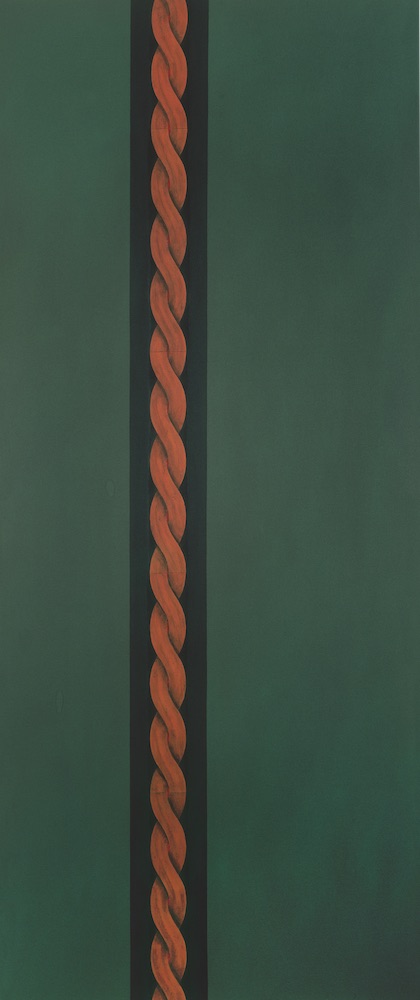
PT: But I think we’ve gotten to the point now where it’s been proven that painting cannot be killed, you can’t kill painting. It won’t die, and we have to accept that fact.
SL: I think there is a long modernist tradition of endgame art–starting with dada and the suprematists (if you like), and a lot of artists have made the last painting ever to be made. It’s a no-man’s land that a lot of us enjoy moving around in, and the thing is not to lose your sense of humor, because it’s only art.

